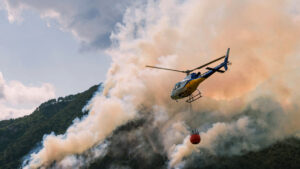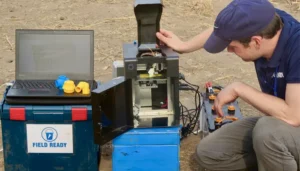3D Printing in Disaster Relief and Emergency Response
The use of 3D printing in disaster relief and emergency response has become increasingly important in recent years, offering new possibilities for the design, production, and distribution of critical supplies and equipment. With the ability to produce customized and complex designs quickly and efficiently, 3D printing is transforming the way disaster relief and emergency response organizations approach product design and manufacturing. In this article, we will explore the role of 3D printing in disaster relief and emergency response, including its advantages, applications, and future potential.
Advantages of 3D Printing in Disaster Relief and Emergency Response
One of the key advantages of 3D printing in disaster relief and emergency response is the ability to produce customized and complex designs quickly and efficiently. With 3D printing, it is possible to produce supplies and equipment that are tailored to the specific needs and requirements of each disaster or emergency situation. This can help to improve the efficiency and effectiveness of relief efforts, ensuring that critical supplies and equipment are available when and where they are needed most.

Another advantage of 3D printing in disaster relief and emergency response is the ability to produce supplies and equipment on-site, reducing the need for long-distance transportation and logistical support. With 3D printing technology, it is possible to produce supplies and equipment on-site, reducing the time and cost associated with traditional manufacturing methods. This can be particularly useful in situations where access to traditional manufacturing facilities is limited or non-existent.
Applications of 3D Printing in Disaster Relief and Emergency Response
There are many applications of 3D printing in disaster relief and emergency response, from creating customized medical devices to producing critical supplies and equipment quickly and efficiently. One of the key applications is in the production of medical supplies and devices. With 3D printing technology, it is possible to produce customized and specialized medical devices quickly and efficiently, improving the quality of care for disaster victims and emergency responders.
Another application of 3D printing in disaster relief and emergency response is in the production of critical supplies and equipment, such as water filtration systems, tents, and tools. With 3D printing technology, it is possible to produce these items quickly and efficiently, reducing the time and cost associated with traditional manufacturing methods. This can be particularly useful in situations where access to critical supplies and equipment is limited or non-existent.
In addition, 3D printing is being used to produce maps and models of disaster-affected areas, helping to improve the accuracy and effectiveness of relief efforts. With 3D printing technology, it is possible to produce detailed and accurate models of disaster-affected areas, providing emergency responders with a better understanding of the terrain and the extent of the damage. This can help to improve the efficiency and effectiveness of relief efforts, ensuring that critical supplies and equipment are delivered to the right locations at the right time.
Future Potential of 3D Printing in Disaster Relief and Emergency Response
The potential of 3D printing in disaster relief and emergency response is vast and continues to grow as the technology advances. In the future, 3D printing technology could be used to produce critical supplies and equipment that are even more customized and specialized, offering greater efficiency and effectiveness in relief efforts.
In addition, 3D printing could be used to produce supplies and equipment that are specifically designed for use in extreme environments, such as space or underwater. With 3D printing technology, it is possible to produce materials that are resistant to extreme temperatures, pressure, and other environmental conditions, allowing emergency responders to operate in a wider range of environments and conditions.

Another potential application of 3D printing in disaster relief and emergency response is in the production of food and water supplies. With 3D printing technology, it is possible to produce food and water supplies that are customized to the nutritional needs and preferences of disaster victims and emergency responders. This can help to improve the quality of life for disaster victims and emergency responders, ensuring that they have access to critical nourishment and hydration.
However, there are also challenges and considerations to keep in mind when it comes to the use of 3D printing in disaster relief and emergency response. One of the key challenges is around the quality and reliability of 3D printed supplies and equipment. While 3D printing technology has come a long way in recent years, there are still limitations in terms of the materials that can be used and the precision and accuracy of the final product. This can be particularly important in disaster relief and emergency response situations where reliability and durability are essential.
In addition, there are also challenges around the availability and accessibility of 3D printing technology in disaster-affected areas. While 3D printing technology is becoming more widely available, there are still many areas where access to this technology is limited or non-existent. This can be particularly challenging in disaster-affected areas where traditional manufacturing facilities may be destroyed or inaccessible.
Despite these challenges, the potential of 3D printing in disaster relief and emergency response is vast and continues to grow. With its many advantages and applications, 3D printing is transforming the way relief organizations approach product design and manufacturing, offering greater efficiency, effectiveness, and customization in the production of critical supplies and equipment.
In addition, 3D printing technology has the potential to offer significant cost savings in disaster relief and emergency response efforts, reducing the need for long-distance transportation and logistical support, and improving operational readiness and efficiency.
Conclusion
The use of 3D printing in disaster relief and emergency response is transforming the way relief organizations approach product design and manufacturing, offering greater efficiency, effectiveness, and customization in the production of critical supplies and equipment. With its many advantages and applications, 3D printing has the potential to revolutionize the way disaster relief and emergency response organizations operate, offering new possibilities for innovation and growth.
As the technology continues to advance, it will be exciting to see how 3D printing is further integrated into disaster relief and emergency response efforts, offering new possibilities for customization, efficiency, and effectiveness. With careful planning and consideration, 3D printing can help to improve the quality of life for disaster victims and emergency responders, ensuring that critical supplies and equipment are available when and where they are needed most.





